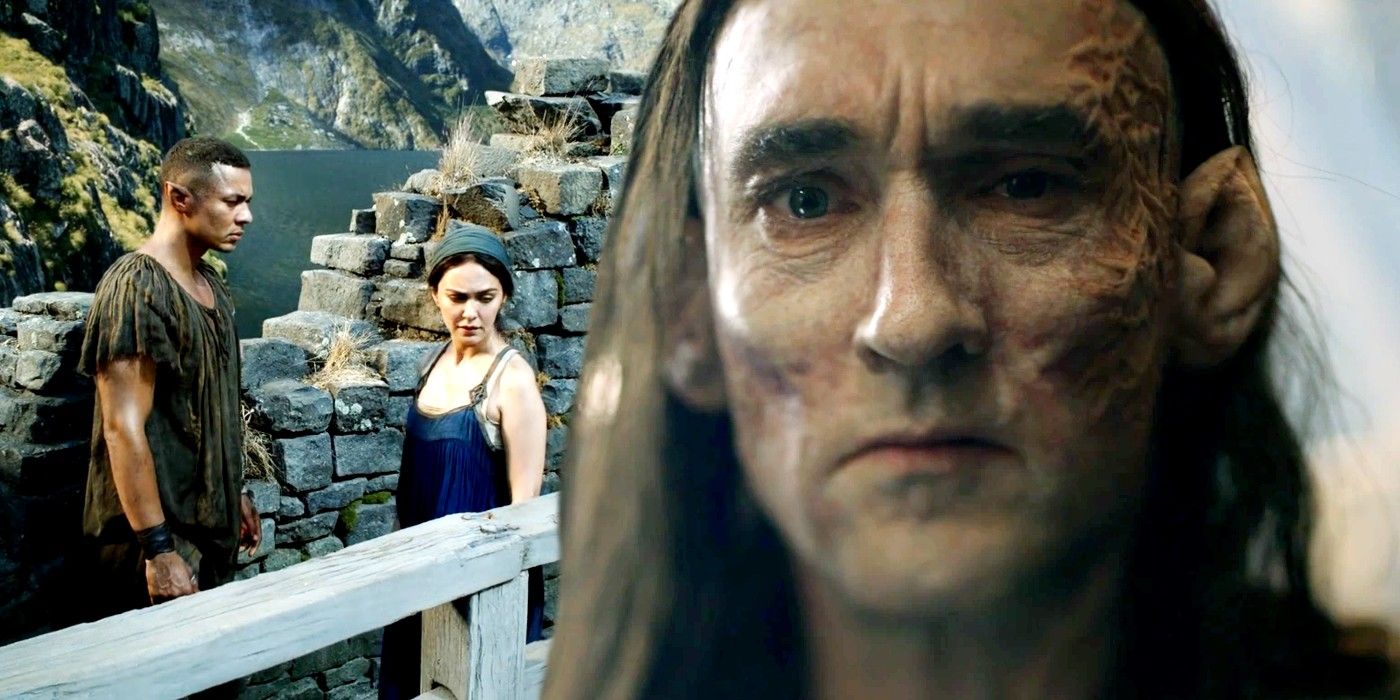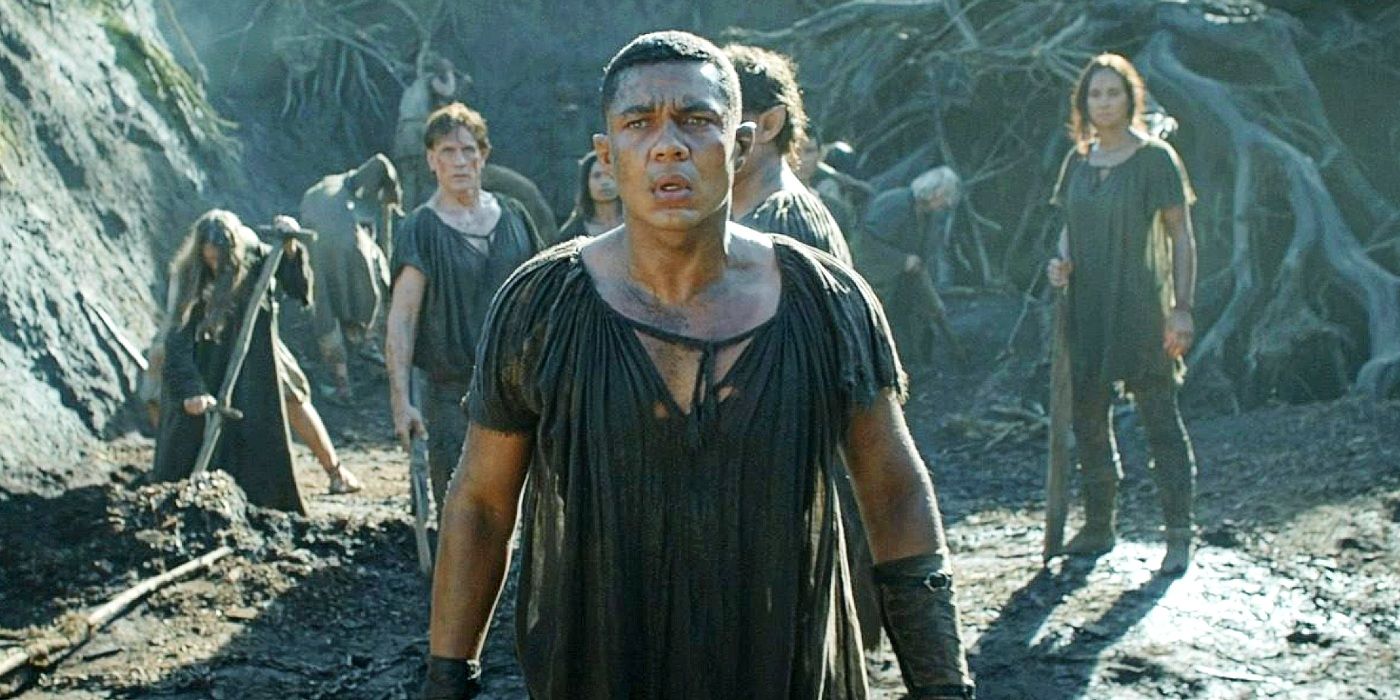
Warning: spoilers ahead for The Rings of Power episode 4Sauron didn’t choose the Southlands as his first post-return invasion target by accident – here’s what’s actually happening in The Lord of the Rings: The Rings of Power. Amazon’s The Rings of Power introduces a new location to J.R.R. Tolkien’s Middle-earth map – the Southlands. A collection of humble human farm settlements, the Southlanders are descendants of men who fought on Morgoth’s side during the First Age. The current population – ordinary folk who have no memory of the War of Wrath whatsoever – are watched over suspiciously by a nearby garrison of elves.
Despite this pointy-eared vigilance, the Southlands has become a first target for Adar and his orcs. After no attacks for centuries, orcs have burrowed underground and ransacked locations such as Hordern and Tirharad, destroying homes, imprisoning villagers, and poisoning the flora and fauna. Galadriel has already figured out Sauron’s contingency plan in case Morgoth was defeated – a sigil depicting a map of the Southlands. The sign told surviving followers of darkness where to gather, and gather they have – but why is such a seemingly insignificant location top of Sauron’s list?
The Southlands’ secret in The Rings of Power can be found by comparing Amazon’s Second Age Middle-earth map against a map from The Lord of the Rings‘ era. A side-by-side glance quickly reveals that the area called “Southlands” in the Second Age is actually “Mordor” in the Third. J.R.R. Tolkien writes that when Sauron returned during the Second Age, he settled and established Mordor, but the story of exactly how he did so isn’t told. The Southlands-shaped sigil was seemingly an instruction to the likes of Adar: “find this place and prepare it for Sauron’s return.” That means enslaving the locals into workers and soldiers, and terraforming the landscape from an idyllic(ish) countryside of fields, grassland and clean water into the putrid, oppressive, dead environment seen in The Lord of the Rings. This process has already begun, with countless trees and homes hewn down to make way for strongholds, roads, dungeons, etc. The need to build Mordor from scratch also explains why Adar has invaded “every village from here to Orodruin” and fits with his remark to Arondir about creating a “new world.”
Why Sauron Chose The Southlands For His New Home

The Rings of Power hasn’t yet explained why the Southlands were unlucky enough to be chosen for Sauron’s ambitious renovation project, but a few perks are already obvious. On a map of Middle-earth, its positioning couldn’t be more perfect for a would-be evil overlord. The Southlands are far enough away from Morgoth’s old base in the north (Utumno) which the Elves would be keeping tabs on very closely, and also leagues away from the elven cities of Lindon and Eregion (or Beleriand during the First Age), meaning Sauron’s new base couldn’t be easily assaulted. This is proven by how effortlessly Adar overwhelms the light smattering of Elves tasked with guarding the area. The Southlands form a natural fortress, surrounded by a circle of mountains that make head-on attacks difficult, but allow access to Rhûn in the east – which had already shown support for Morgoth – and future allies down south.
The Southlands’ transformation into Mordor may explain another mystery in The Rings of Power – Meteor Man. Though The Rings of Power‘s Harfoot storyline is narratively separate from the Southlands plot, several subtle clues prove the two locations are suspiciously close to each other. The hunters from The Rings of Power episode 1 were actually Southlanders, and the show’s inter-scene atlas showed Sadoc Burrows and his hairy-footed mob are roaming only a little way north of the Southlands’ mountains border. Maybe Meteor Man landed there because he’s actually Sauron, and has a vague memory of where he should be headed. Nori’s quest to find her new friend’s stars could lead straight to the land soon to be rechristened as Mordor.





